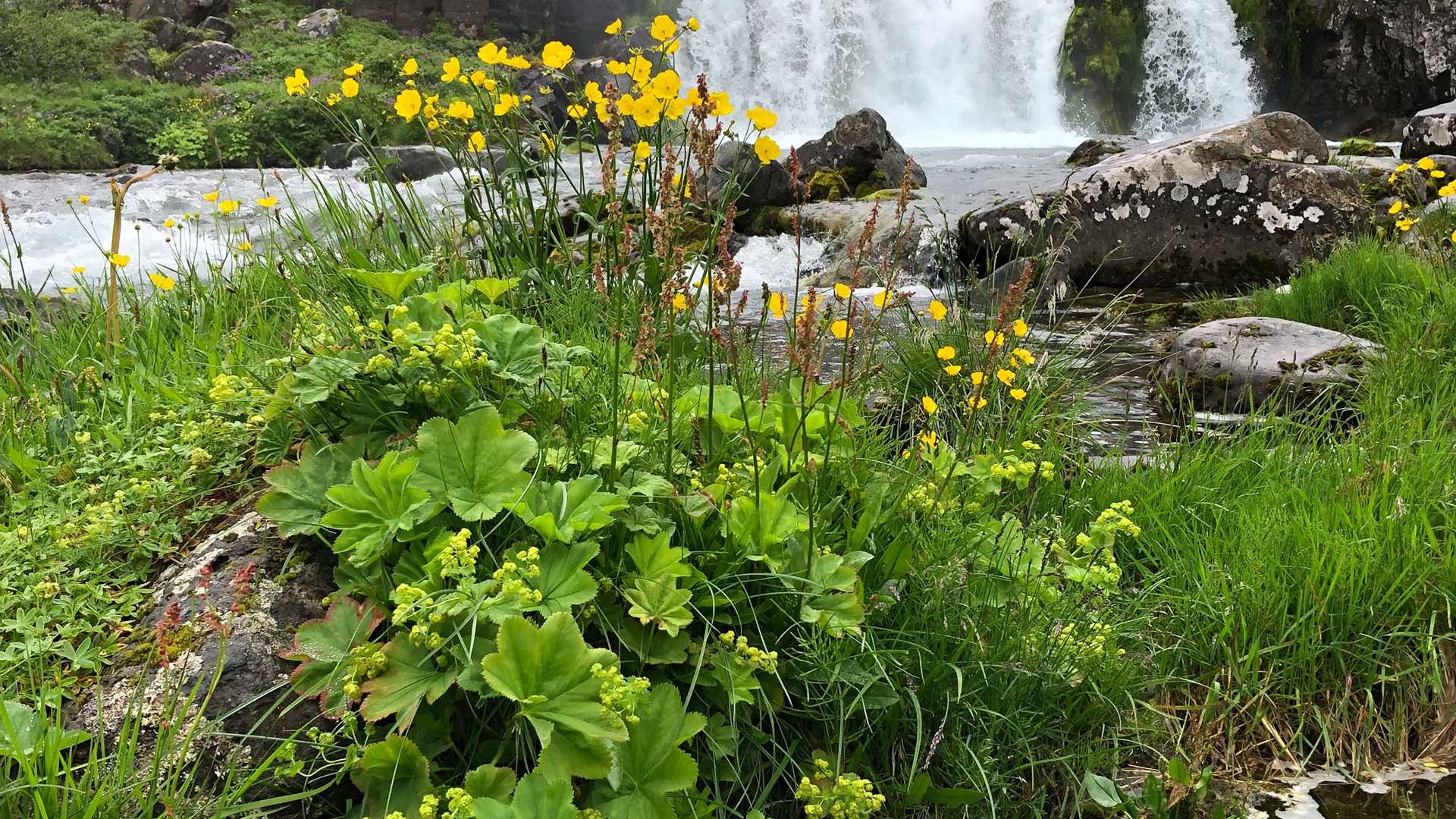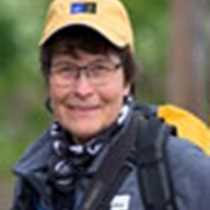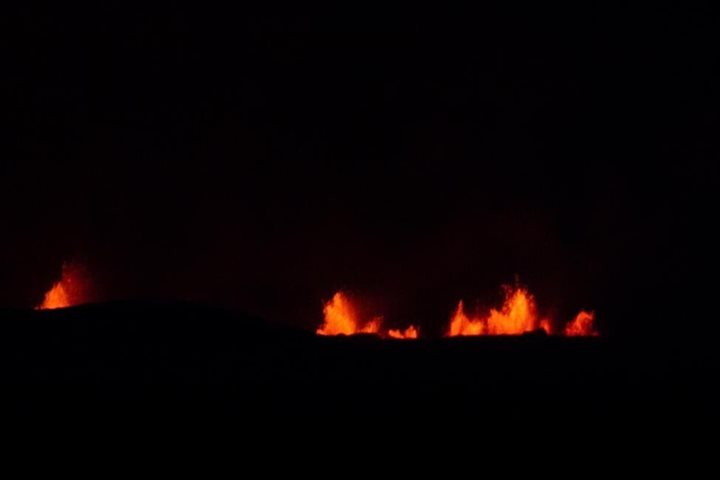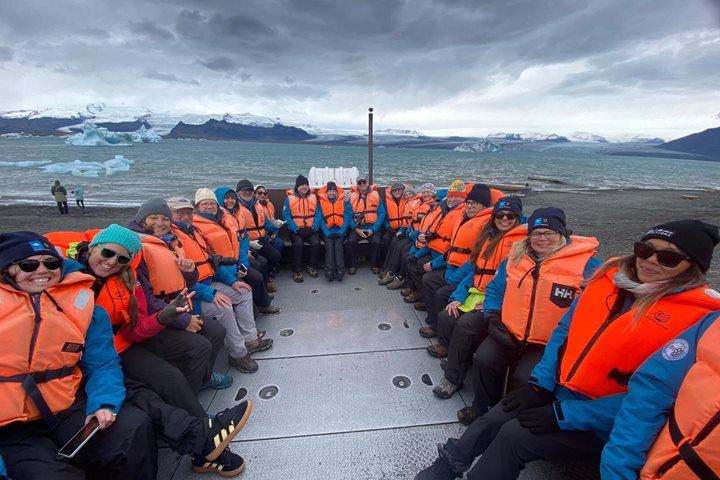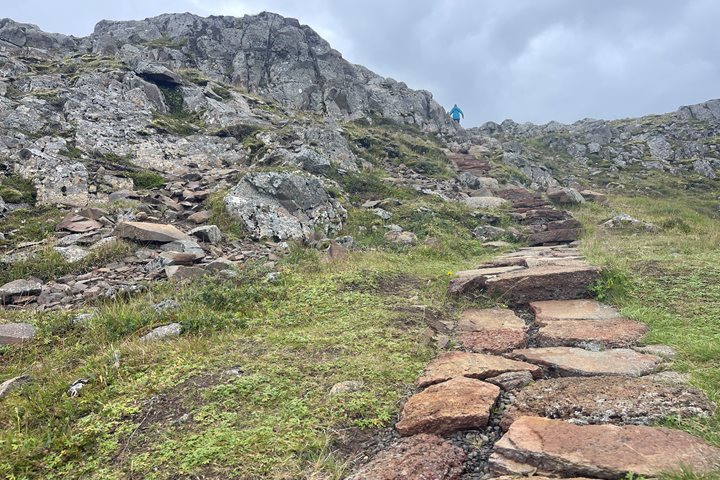This morning we sailed into the majestic Arnarfjörður, a deep fjord carved by Ice Age glaciers that ground down through the basalt layers below as they flowed seaward. This location is typical of the deeply carved landscape of the Westfjords that are formed of layer after layer of basaltic lava flows that were emplaced 13,0000 to-16,000,000 years ago. Though geologically very young, these are some of the oldest rocks in Iceland. Our goal was soon in sight, splendid Dynjandi, the “thundering” waterfall that is famous in the Westfjords. Dynjandi certainly thunders and roars as it jumps down in stepwise fashion, forming a series of waterfalls over the lava layers that were carved into great steps by the relentless ice.
In the evening we visited charming Vigur Island located in the giant fjord, Ísafjarđarjup, home of Atlantic puffins, eider ducks, black guillemots, wild Arctic terns, and more. The terns are in Iceland called Kria for their loud calls. Fearless in protecting their young on their nesting grounds, they do not hesitate to attack us, flying at our heads and screaming in protest that we are there. In a calmer scene, puffins posed with beaks full of small fish and eider duck hens herding their fuzzy ducklings around the grounds.8/23/2024
Read
National Geographic Explorer
Reykjavík, Iceland
After a cracking morning out at sea with some truly impressive waves, we were called up to the lounge by Expedition Leader Leah Eaton, who briefed us on a volcanic eruption that had just started on the Reykjanes peninsula. As the briefing concluded, we could already see the volcanic plume through which we would later sail on our way around the Reykjanes peninsula. We finally reached Reykjavík in the afternoon, where we had our final lounge briefing with our guest slideshow, a presentation on our final volcano plan, and a farewell speech from Captain Peik Aalto. After an early dinner, we mounted a trio of busses that carried us out onto the Reykjanes peninsula to an abandoned airstrip. From there we could already see the spectacular eruption very clearly, but to get a better look, we made our way onto some of the old storage bunkers which lined the airstrip. This gave us a view of the eruption in all its glory, with smoke billowing into the sky from the two-kilometer-long fissure, and also a number of smaller fires. It was a truly wonderous ending to an already incredible expedition.

